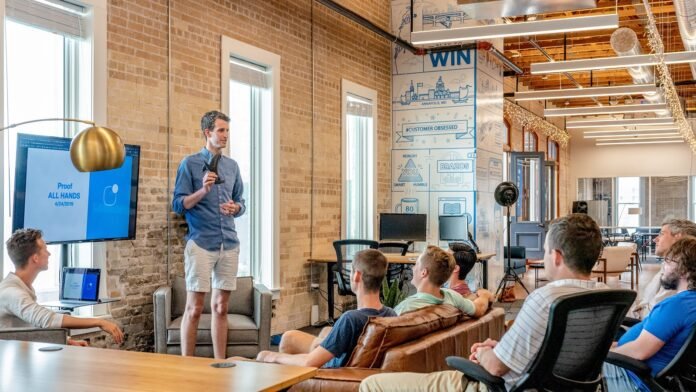The dynamics of the workplace are changing, more than ever. The conventional definition of workplace or office is not as rigid as it was, a decade ago. Although ushered in by the pandemic, remote working is the new normal and organizations, as well as employees across the globe, are considering remote working to exist even after the pandemic subsides. The huge influx of mobile technology that heavily streamlines working from home, or a cafe or a beach so to speak is responsible for this change.
Millennials: A critical cog
But another critical element that has led to the change in the workplace dynamics are the millennial employees. The adults between average ages 22 and 38 who now comprise a large proportion of the global workforce belong to the general Y. The millennials were raised (if not born) in the era of the internet, mobile devices and social media and have a totally different perspective than the baby boomers or generation X. These millennials have a distinct cultural identity, especially in the workplace, having been employed through at least one global recession (the great recession or the recession of COVID-19).
Love them or hate them, they are the future of the workforce, at least until the generation Z kicks in. And hence, an organization needs to stay relevant to its modern workforce. Embracing new ideas, implementing new policies relevant to the needs of these millennial employees and of course, adopting new technology is imperative.
Millennials and technology
As mentioned before, this generation was raised with technology all around them and can be easily labeled as technology enthusiasts, if not tech-savvy. From day to day operations to actually working and getting things done, the millennial generation makes heavy use of technology. This includes smartphones, tablets, laptops, wearables and IoT-based things. In the world of ‘connected-everything’, millennial employees expect the same from the workplace.
Minimized paperwork, less in-office meetings, virtual training, hiring and onboarding hence follows suit. Although alarming to the previous generation that still is a part of the workforce (especially in the leadership positions), the millennial working style has its own benefits and outcomes.
This generation of workforce demands flexibility and location-independence which makes the use of mobile technology in the workplace indispensable and this leads to a mobility transformation, while also sufficing the need to stay afloat in times like the pandemic.
Embarking the mobility journey
As organizations decide to embark on the mobility transformation, they are obviously overwhelmed by the number of choices available to them. This includes the hardware as well as the software that they can choose for their workforce. They have to make a conscious decision to consider the large frontline workforce and their needs while working out in the field as well as the knowledge workers.
While choosing the devices that will be used by the employees, especially the millennial employees there is a dilemma. To go with phones or tablets or phablets? To choose Android or iOS? And the more the employees, the more the opinions and preferences.
Organizations also need to consider that employees will want to use their personal favorite devices to be the most motivated and engaged and in-turn productive.
Challenges with choosing the right technology
With new phones and new technologies being introduced every single day, it is difficult to keep up. Especially if the needs of the millennials in the workplace are going to be constantly evolving, offering the latest technology each time a new device is rolled out in the market is impossible. The excessive costs in procuring the device inventory are unfathomable and apart from the very large corporations, rarely can businesses spend so much.
Technology leasing- the solution
Technology leasing or using HaaS- hardware as a service is the best solution to this dilemma of staying up to date with technology. Technology leasing, as a model, is already accepted in large consumer markets in the developed countries.
With technology leasing, organizations can easily make available the latest technology to their employees- millennials or otherwise. Upgrading to the newer versions is easy and affordable since the device was never really purchased. The total upfront cost of device inventory also goes down and the organizations can pay as they use.
The employees on the other hand always have the best-in-market tech at their disposal. Happy, motivated employees are the most productive and can contribute to the growth of the organization in ways more than one. It is a win-win situation for all.
Closing lines…
Today it’s the millennials, tomorrow it will be the Gen Z walking into the office as professionals. Realigning organizational structures and policies to fit in the new demands of the workforce is a wise choice and with technology leasing, this can be done without putting a dent in the company account.
Author Bio
Renuka Shahane
Renuka Shahane is a Sr. Content Writer at Scalefusion MDM and NuovoPay. An engineering graduate, an Apple junkie and an avid reader, she has 5+ years of experience in content creation, content strategy and PR for technology and web-based startups. Renuka is keen in learning new trends surrounding cybersecurity, repercussions of remote working and the evolution of enterprise mobility.








